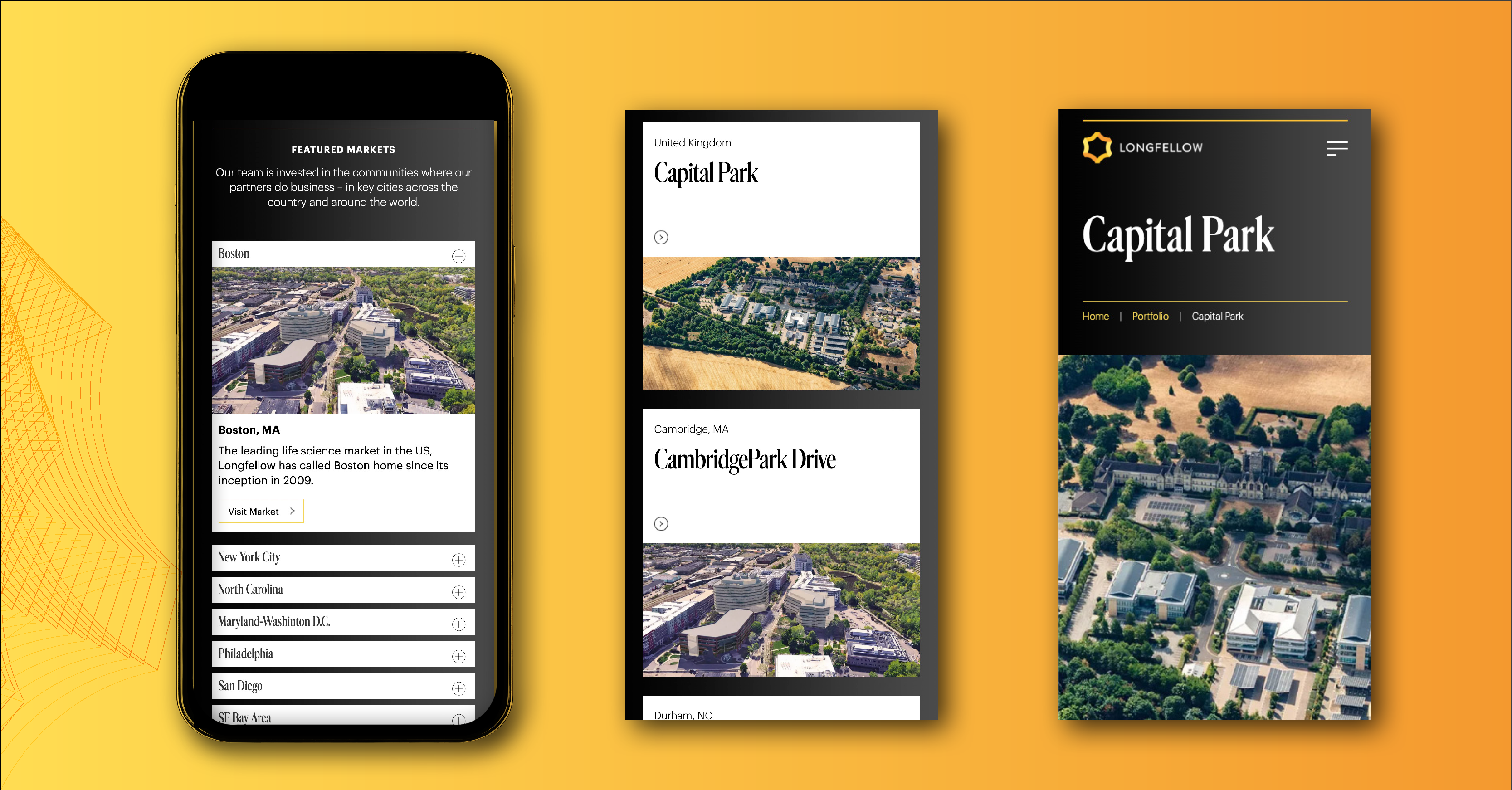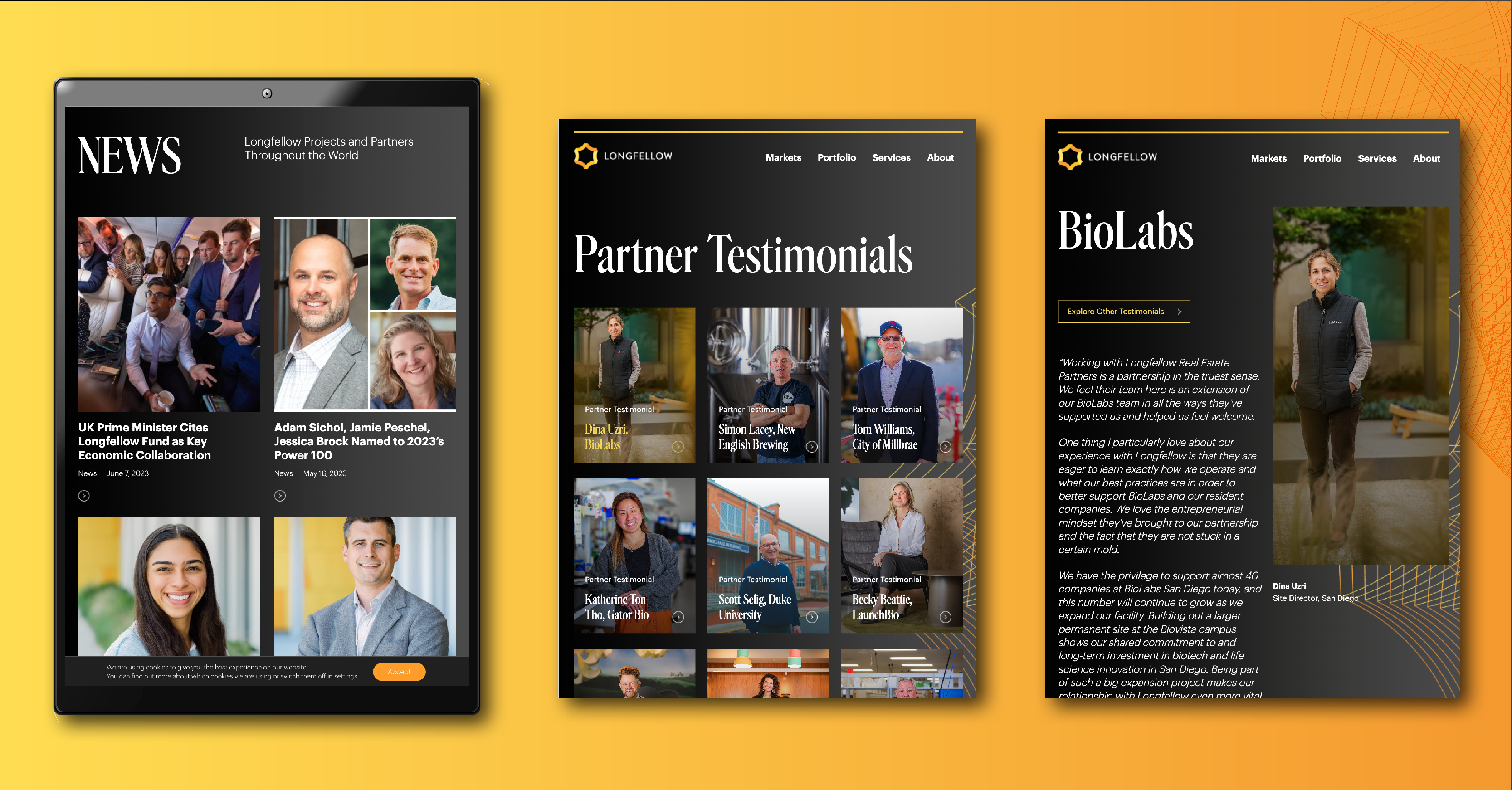Say Less, Experience More: How UX can help your brand stand out
One of the best ways to tell a story is to “show, don’t tell.” The same goes for conveying a brand’s message. But in crowded industries where competitors are all saying the same thing, it can be hard to show what makes your business unique. When considering the customer’s journey in finding a business that works for them, the answer to this problem can be found within the user experience or “UX.”
UX can be an effective tool in grabbing a prospective customer’s attention and ultimately motivating them to choose your service or product. For our client, Longfellow, a real estate investment company that caters to life sciences and technology industries, the goal was to define their brand while simultaneously transforming their site to deliver new messaging. We saw this challenge as an opportunity to showcase Longfellow as a unique outlier in the real estate space by elevating how they foster long-term partnerships with clients in a field that typically focuses on transactional relationships and bottom-line metrics. Here’s how we did it:
Elevate What Makes You Different
Many real estate agents and landlords focus on one specific, and very obvious, aspect of the business: the bottom-line metric. But for Longfellow, success was built on their reputation and relationships with clients. Our goal was to convey that unlike the other guys, Longfellow is invested in the experience of their customers and cares about their clients’ successes. This humanizes the brand, making Longfellow stand out amongst its competitors. The next step was communicating this in a way that would get prospective clients to listen and receive this new message through web design.

Design Experiences that Tell a Larger Story
We introduced a Market Explorer component to give site visitors a clear and concise overview of the key cities where Longfellow operates. Visitors can thumb through market slides like a digital catalog to get an at-a-glance view of Longfellow’s reach. We created this experience to demonstrate the roots Longfellow cultivates in each market and their investment in the communities where they work—reflecting their “relationships over transactions” approach.

We also designed a profile template for Longfellow to help tell a rich story about each market. These templates bring together global and local community elements, emphasizing Longfellow’s focus on businesses and the people within them.
Our focus on the individual’s experience also comes to life through testimonials from Longfellow clients that highlight their collaboration with Longfellow and how they have benefited from their services. So instead of telling the story of their past successes through flat statistics and logos, Longfellow let their work—and their clients—speak for themselves.
Lastly, we integrated content aggregation into the UX—elevating relevant news stories to showcase the impact Longfellow has had on their partners’ businesses. In providing this rich news experience, the site evokes a sense of constant activity while elevating the progress Longfellow’s clients are making toward their goals.

Bring Your Messages to Life
Customers want to know what a business can do for them. Outside of just delivering the end result, they want to work with a business that cares. Communicating a brand’s value proposition requires more than displaying big numbers on a web page—UX can help deliver a brand’s feeling and message in a way that feels personal to the client.
Through UX, we sold the Longfellow proposition by emphasizing the collaborative relationships between Longfellow and its clients. Beyond pitting numbers and figures against competitors, we wanted to focus on communicating value and selling the positive experience of working with Longfellow.
We were able to “show, not just tell” Longfellow’s message by elevating certain aspects of their brand through UX designed to activate and energize their customers. Through this approach, the brand not only achieves positive metrics but also evokes positive emotions in clients.


